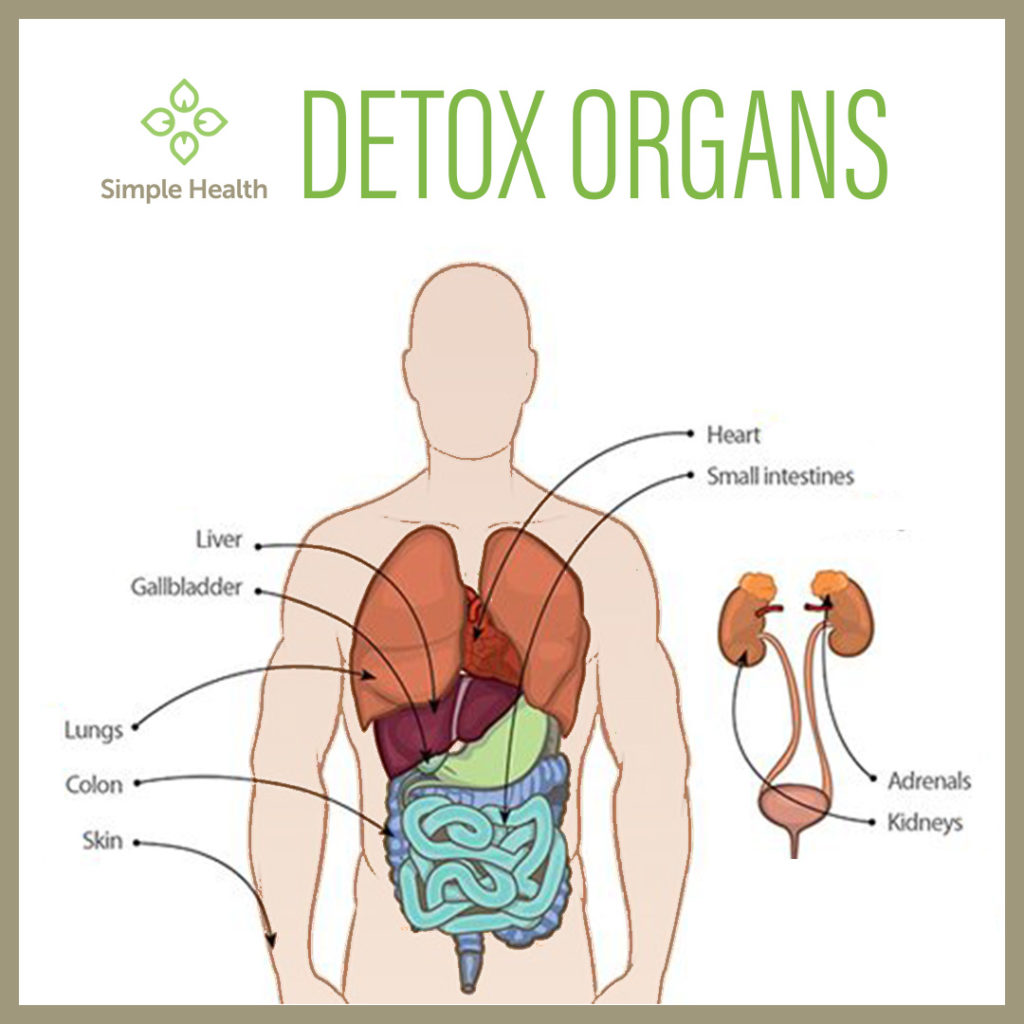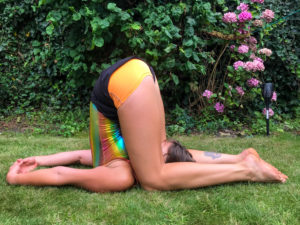Good detox versus bad detox. Is there a quick fix? What is the sustainable alternative? And what is The Ideal Fast?As a yoga teacher and practitioner, I am hugely interested in the benefits of yoga that go beyond the physical practice. What I like about yoga and Ayurveda’s views on fasting and detoxing is that it is different for each person. What we know for sure is that our bodies are detoxing every day by itself. What we can do is to stimulate those processes through yoga and taking care of ourself.

In this last part of the yoga diet series we are going to dive into the controversial theme of fasting and detoxing. The focus will be on what the yoga tradition has to say about these topics. I will explain the idea that fasting can relate to so much more than just fasting from food. In the end of this blogpost I will share some practical tips on how you can use the teachings from yoga about fasts and detoxes in everyday life.
The Detox trend
Fasting becomes more and more of a trend and the word ‘detox’ is everywhere. We are always looking for ways to improve our lives, so it is only natural that these subjects can be of interest to us. It seems that there are new trends in the world of detox and fasting every month. Have you ever heard of the ‘Charcoal Detox’? In this diet people consume charcoal in an effort to remove toxins from the body. Or why just not use an IV drip to detox? Or stick to a ‘mono diet’ where you just eat one food for an extended period of time. Grapes for example. I don’t make this up. Click on the link if you don’t believe me.
To be fair some of those trends can sound really promising (obviously, not the ones mentioned before). But have you ever thought of the idea that detoxing and fasting does not apply to the physical body only? Yoga did. Yoga points out the importance of detoxing our mind as well. Before we dive into that, let’s talk a bit more about detoxing and fasting.
Our body the detoxing machine
When we hear the word detox, we often think of drinking detox juices or other types of fasting. Often these so called ‘cleanses’ promise results immediately. But do we need these?

Detoxification, or ‘detox’ for short, is the body’s process of removing toxic substances. Our incredible body is perfectly capable of detoxing itself. Detoxification is not about food, or diet, or a pill – it is an ongoing process that the body does all on its own. Even when you are reading this, at this very moment, your body is busy doing a detox. It happens all day, every day.
Toxins in our body
Our bodies are designed to eliminate waste (insert poop emoticon) and eliminate toxins from our body. There are many ways in which the body can build up toxins. Through our environment; what we breathe in, what we eat. But also through emotions like anxiety and stress. Sometimes these toxins can overload us so much that our body can’t do its job properly. For example because of a very stressful stage in our life, a diet full with processed food and alcohol or a lack of exercise. Like I said before, there is no ‘quick fix’. What we can do is optimize that detox process that our body does every day. This is where the practice of yoga comes in.
Yoga as detox
The body eliminates waste through its circulatory system, digestive system and lymphatic system. Our main detoxification organs are the liver and kidneys. The bowels and urinary tract are extensions of these organs as wastes exit the body. The skin (through sweat) and the lungs are also part of our detox system. To keep them working optimally, we need to take care of our body to keep those organs healthy. Yoga can help us with this. Yoga oxygenates our body by increasing the blood flow. Yoga also reduces stress hormones in our body, for example adrenalin and cortisol. The twists, bends and folds that take place during yoga, massage the internal organs and in this way, stimulate the detox organs.

Breathwork
Yoga has more detoxing elements than just the physical practice. Our breathing is an automatic response. However, we do have some control over how we breathe. It is easy to just go about our day without checking in with the way we breathe. We forget the importance of ‘correct’ breathing. Meaning: we forget using our full lung capacity. Deep belly breathing to optimize the detox process of our lungs. Breathing techniques, called ‘pranayama’, have been used for thousands of years to clear the mind and get humans in touch with themselves. Even if you are not into the spiritual side of breathing, there is hard scientific evidence to show us how important that deep belly breathing actually is. Pranayama increases the oxygen levels and stimulates the lymphatic system, which results in a faster and better removal of toxins from our body.
Fasting

The Cambridge dictionary describes a fast as ‘to eat no food for a period of time’. These times can vary. There are numerous types of fasts and there is even more controversial information out there. I will not go into detail about all this, but I’ll explain what the perspective of yoga is on fasting. Fasting allows the intestines to take a rest and improve the functions of our digestion system. When you practice a fast you learn to control the senses and not to react on the tendency to eat food out of habit or routine.
Fasting in yoga
In yoga it is common to start the morning yoga practice ‘fasted’ as in: with an empty stomach. This is quite logical, because who wants to downward dog with a full stomach?
Most of the pranayama techniques are also practiced with an empty stomach. This works on a more subtle level, it helps the energy to flow better. Like I mentioned before, there are many different types of fasts. One that gained a lot of popularity recently is ‘intermittent fasting’. Where you have certain hours of the day in which you can eat and certain times you ‘fast’. If you read my recent blog about healthy yogi food habits you have read that yoga advises a minimum of two hours between eating and sleep. If you start your day with yoga and pranayama before breakfast, you already create that window of fasting naturally. I really struggled with this in the beginning when I went to India for my teacher training. Since I thought I really needed breakfast first thing in the morning. But after one week my body already got used to this.
Cultural fasting
In many cultures and traditions, fasting is a regular practice for thousands of years. But for many modern westerners, fasting of any form is rare. If modern westerners do a fast it is usually only for the physical benefits, to lose weight or kickstart new eating habits. Many religions all over the world use fasting as a means for spiritual growth or to regain focus. The Islam has the Ramadan, Judaism has Yam Kippur. Fasting is done in Buddhism, Hinduism and Taoism.
Fasting in the yoga tradition
In the yoga tradition it is believed that fasting can be a useful tool for everybody. Fasting is a way to cleanse the body and to control both mind and body. It doesn’t have to be an extreme fast to have profound benefits. Given the amount of time we invest in food, they realized that taking a break from eating can be very helpful. That time can be invested for personal development, like meditation or karma yoga which is selfless action, like volunteering. The Ayurvedic, Yogic and Hindu traditions choose the days for fasting based on the moon cycle. New moon and full moon are days of fasting. Tidal changes happen because of the moon. The sea can be turbulent at those times, just like our mood. You might not believe this but if you know our body is made up of more than 70% of water, it is not strange that the moons magnetism affects our body as well as our mind.
Ekadashi
Ekadashi means eleventh in Sanskrit and it is considered the ideal day for fasting in Hindu and Jain culture. Because yoga originates from India, some yogi’s use Ekadashi too as a day for fasting. Ekadashi is the eleventh day of the two lunar cycles of the month on the Vedic calendar. One is in the first half of the month when the moon is waxing. The second is in the half of the month when the moon is waning. Some people choose to refrain from any food or even water. Some people choose to eat little food, some fruit, vegetables and tea. This all depends on the strength of their body. No one body is the same, therefore fasting is different for everybody. Food with high protein and carbohydrates are avoided. Eating grains and cereal of any kind is not allowed. The fast starts from sunrise to sunrise the following day. Because our bodily functions are influenced by the moon and its magnetic pull. Fasting on Ekadashi helps to maintain the natural flow of fluids in the body and thus helps to keep us healthy and happy in mind and body. My first experience with this type of fast was in Australia in Krishna Village and I loved it. Writing this blogpost has inspired me to start this again, I will keep you guys posted on this.

Taking a break
Why go on a fast? What I’ve learned about fasting when I was in India is that only abstaining from food is not enough. Fasting is about going on a break. In today’s world, our bodies are overstressed by unhealthy eating or unhealthy eating habits. The idea of fasting is to heal, repair, detoxify our system and becoming aware of what we put into our body. But there is more, we need to take a break from more than just certain foods.
Detox for the mind
In modern times we live in an overstimulating world, we are continuously bombarded with new information from the outside. This makes it difficult to navigate our insides, to hear our own voice. We can feel lost, and not clear about the life we lead. We need to detox from our phones, from the tv, social media etc. We need this to reset and to find our center again. One of my teachers in India taught me that the ideal detox/ fast is not only about refraining from certain foods but to fast all our sensory organs. In this way our whole body and mind can take a rest.

The Ideal Fast
An ideal fast to give all our senses a break would mean using all of our senses minimally. Only for the necessary things. A fast for the whole body and mind would look like this.
- Sight: Only look at what you need. So no tv or phone but you can look at the basic things in life. Like going to the bathroom for example. Or a walk in the forest. No overstimulating things.
- Hearing: Only listen to what you need. Keep it simple. Avoid radio or trying to listen to all the conversations that are going on around you.
- Taste & smell: This is the food part of the fast. Maybe abstain from all food or just a little to sustain yourself but no fancy flavors that stimulate the mind.
- Touch: Also refrain from physical contact to keep the mind quiet. But a hug is a hug, right?!
Fasting vs. Cleansing
During this cleanse you will eat Kitchari and Kitchari only. I can here you mumble: ‘but isn’t that a mono-diet?’ You are right, it is. But Kitchari is a dish which contains much more than just one food group. Kitchari is a simple dish made of mung beans and rice. It is a very sattvic meal. For most of us the idea of cleansing with beans and rice sounds crazy. Where is the green juice? Where is the hunger feeling? Yes, raw green veggies are cleansing but are also hard to digest. the Kitchari cleanse is taking another approach. In Ayurveda health starts in the digestive system. The purpose of only eating kitchari is to give the body only one really digestible thing, so it can rest. Then the self-healing process can start. The different ingredients in kitchari play a different role. The mung beans are alkaline and blood-purifying but also provide proteins and nutrients to nourish the body. Rice is easy digested, the different warming spices help to fire up the digestive system. Advised is to do this 3 to 5 days. I’ve tried it now a few times and my body felt better while I still had enough energy during the day plus it tastes great.
Follow your own intuition
What I like about yoga and Ayurveda’s views on fasting and detoxing is that it is different for each person. What we know for sure is that our bodies are detoxing every day by itself. What we can do is to stimulate those processes through yoga and taking care of ourself. If we do feel the need of having and extra detox or if we want to fast for spiritual practices or just to give our body a break, it is important to follow our own intuition and not just follow some new trend. Trust me I’ve been there. I’ll keep it short: it was not a success. Fasting a becoming a popular trend, but try to stay intuitive when you decide to go into this. If you are doing it because someone said you should or just to get a quick fix you are probably missing the boat. Remember this: it is not just about what you don’t consume but more importantly about what you do consume.
If you are interested in a detox yoga class followed by a detox massage to give the body everything it needs for your health check this link.
Namasté beautiful people!
